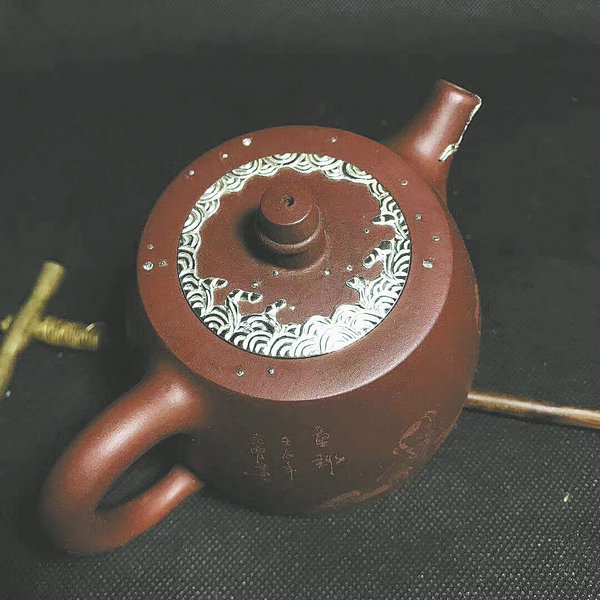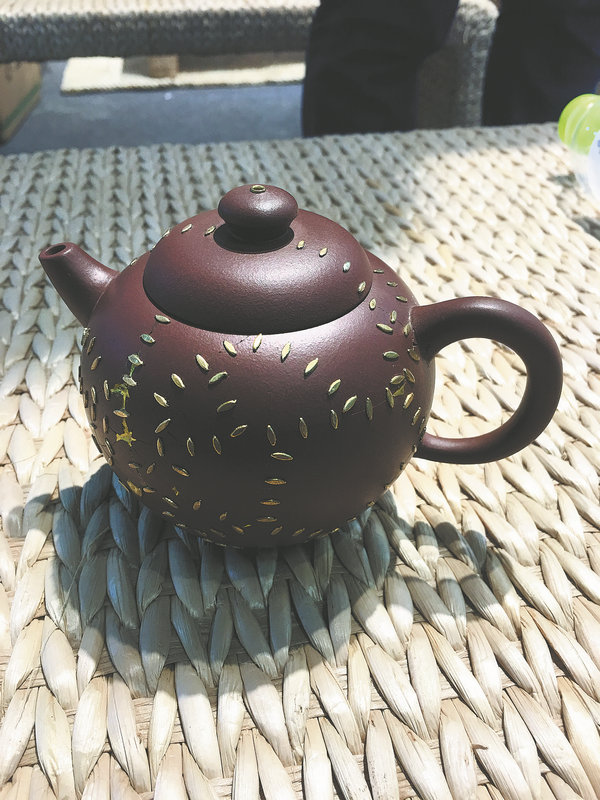

Nie's father and grandfather were focused on fixing porcelain items to restore their functionality, such as wares that contain water. Nie has taken it a step further as he tries to make the repaired items look even better than the original ones.
He has also learned traditional Chinese engraving, by which he can create intricate relief designs on a metal plate and uses the skill when repairing ceramics. "I hope when seeing the finished products, people don't think of them as once-broken pieces."
When he mends a porcelain ware, he not only fixes what's broken but also strengthens friable parts such as the spout of a teapot.
After many years of practice and exploration, Nie has combined traditional ceramic-repairing techniques with modern art design to help the craft develop further while making it more relevant to daily life.
For example, when mending the broken cover of a teacup, Nie could have just added a couple of metal staples to reconnect the broken parts, but he decided to create a bamboo pattern on it. He also engraved a bat to cover the missing piece of the cup.
Nie says handmade things have one advantage over mass-produced items, in that each is unique. Mending ceramics not only restores the appearance and functionality of a ware but also preserves its historical and cultural value.
